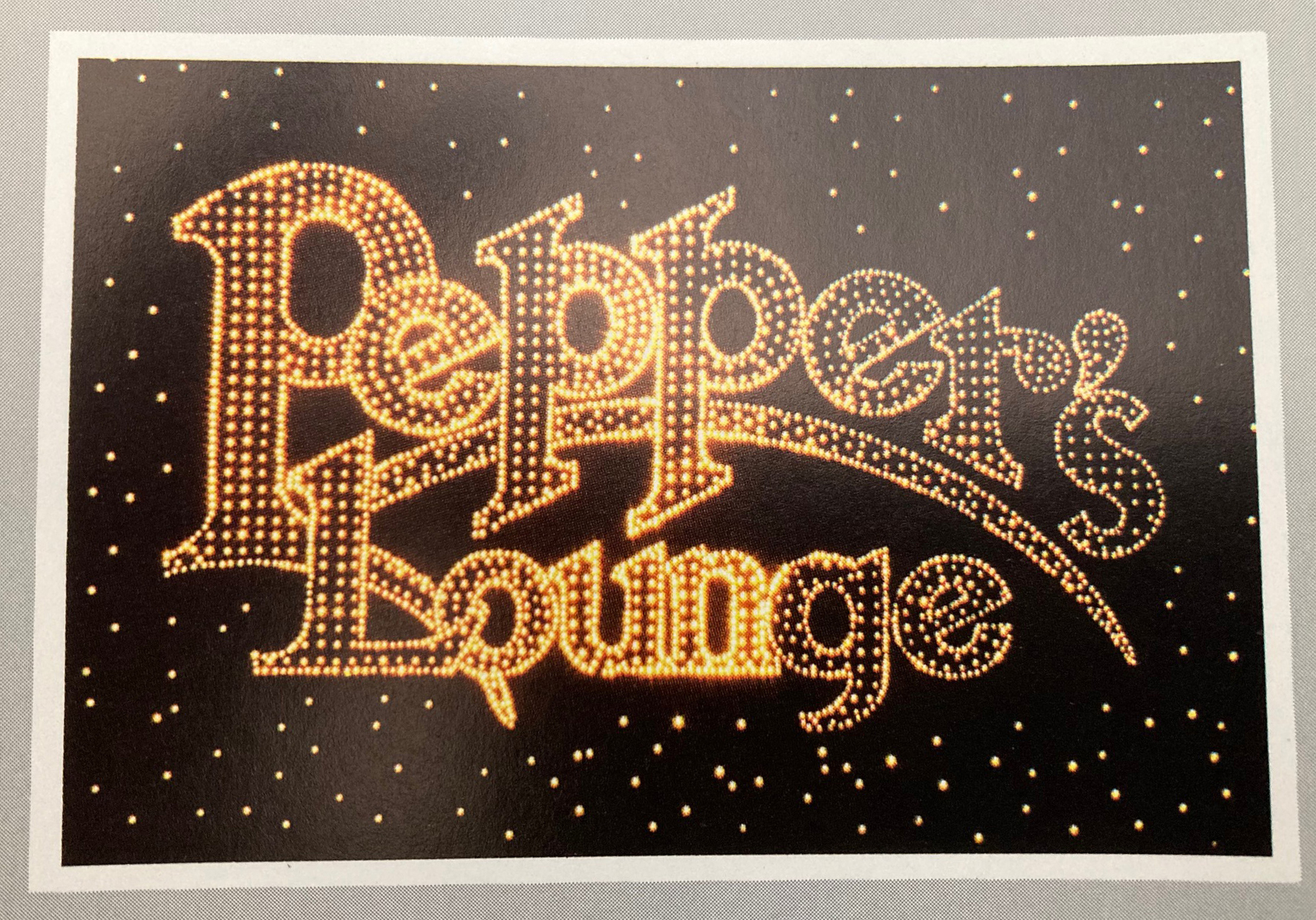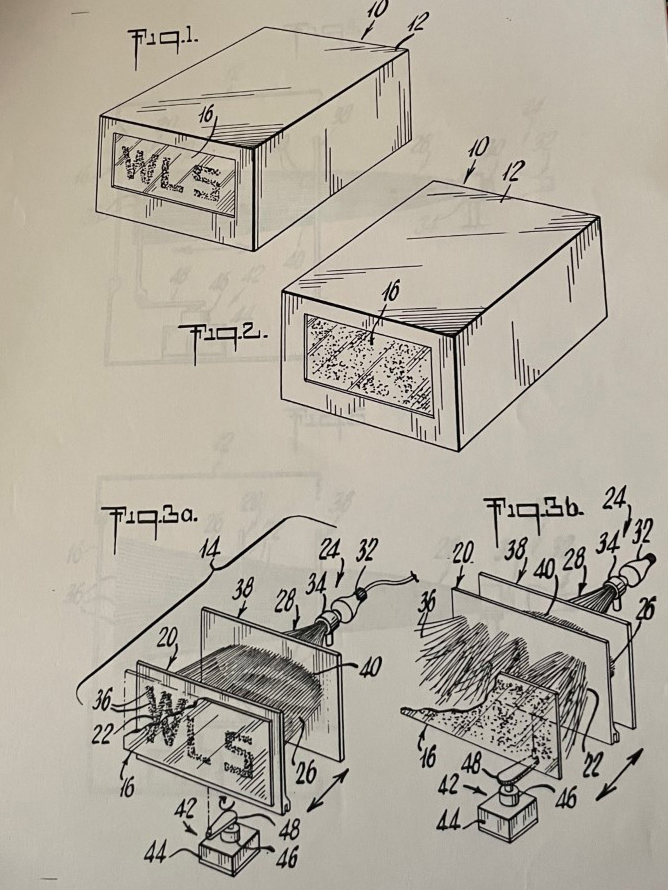The Fiber Optic work
During the time that Bill and I were working on the blimp, some new ideas started emerging from the roiling brain of Bill Sansom. There was the flying jellyfish idea, where large helium filled "jellyfish" would propel themselves around the room by squeezing air the way jellyfish squeeze water. There was a light display driven by two clock motors with different speeds to produce a seemingly random undulation. There were others.
But the ideas with the most appeal for Bill, and the ones that led to his most productive period of work were about fiber optics. Optical fibers are glass, or in this case, plastic fibers that are designed to transmit light efficiently. Bill designed and built several interesting devices using the fibers. He applied for patents on some of them, did the research himself, and after some time of intense sparring with the patent examiners by mail, ultimately obtained two patents.
 Bill created and patented a device to transform a grouping of many hundreds of separate fiber optic strands from a inchoate mass into a startling recognizable pattern. The pattern might take the form of a logo, a short piece of text, a "picture", whatever. The fibers were far, far brighter than anything seen in those tabletop gadgets.
Bill created and patented a device to transform a grouping of many hundreds of separate fiber optic strands from a inchoate mass into a startling recognizable pattern. The pattern might take the form of a logo, a short piece of text, a "picture", whatever. The fibers were far, far brighter than anything seen in those tabletop gadgets.This is how it worked. A metal housing was fitted with a thin panel at the front. The panel was drilled with an array of tiny holes that conformed to whatever final pattern was desired. A single fiber, only 0.030" in diameter was inserted into each hole. The entirety of fibers were then bundled together into a short metal tube and set with clear epoxy. The tube was cut square and polished, fixed at the rear of the device and a bright light source fitted to its end.
 The forward fiber ends protruded through the panel about six inches. In that position the fibers were seen as a random collection of bright dots. The panel was then mechanically moved forward and back. As it moved forward, the excess fiber length was taken up, so that at the extreme forward position, each fiber had virtually no protrusion, and was thus sitting flush in its hole.
The forward fiber ends protruded through the panel about six inches. In that position the fibers were seen as a random collection of bright dots. The panel was then mechanically moved forward and back. As it moved forward, the excess fiber length was taken up, so that at the extreme forward position, each fiber had virtually no protrusion, and was thus sitting flush in its hole.At at that point the pattern itself was clearly focussed. This oscillation of the panel formed and then randomized the fibers; the pattern continuously appeared and dissolved, slowly, silently and hypnotically.
Another one of these ideas led to several commissions to build and install fiber optic ceiling lighting systems, including "Visage", a club in the west 40's NYC, "Oz", a club at the top of the St. Francis Hotel in San Francisco (pictured), and an installation in Brussels.
These ceiling projects were like a starry sky above, with tiny points of light twinkling. Or the lights could be made to perform many different patterns and in many different colors. Each tiny point of light was the tip of a single optical fiber, and thousands of them would be fixed into the ceiling at different heights and positions. The fibers would be gathered at the other end into a bundle (or in some cases several bundles), and then bonded together and cut cleanly. By directing light into this bundle, the scattered fiber ends could be made to light up.

To make interesting patterns, Bill built "projectors" that would shine an intense light source through films or masks that were made to move using electric motors. By careful control of the mask designs as well as the routing of the fibers, he was able to produce twinkling stars, or sweeping waves of color, or other quirkier effects.
These "projectors" were large and heavy affairs, and the light sources extremely bright (and hot). Bill had to manage the heat to prevent the masks or the fiber ends from melting. He ultimately used dichroic glass mirrors as filters to redirect the infra-red portion of the spectrum (which is invisible but carries much heat) away from the masks and fiber bundle.
I was not directly involved in these projects, although we had many phone conversations on relevant technical subjects during this period. I was busy being a new parent.
There don't seem to be many pictures of any of this stuff, but I'm still looking.
Bill Dotson